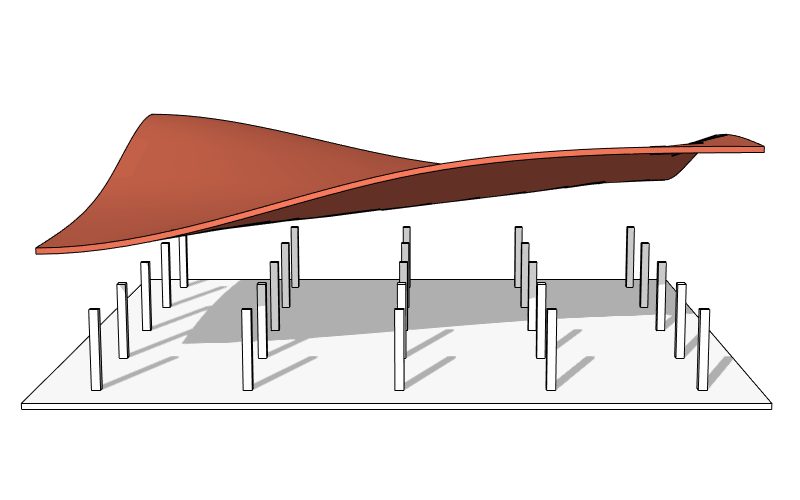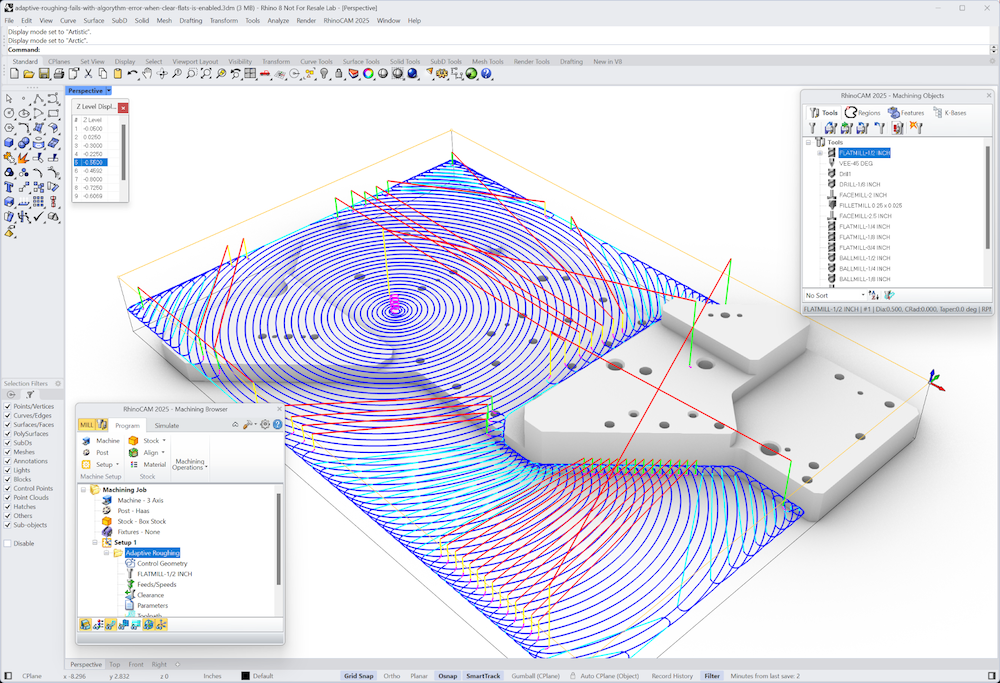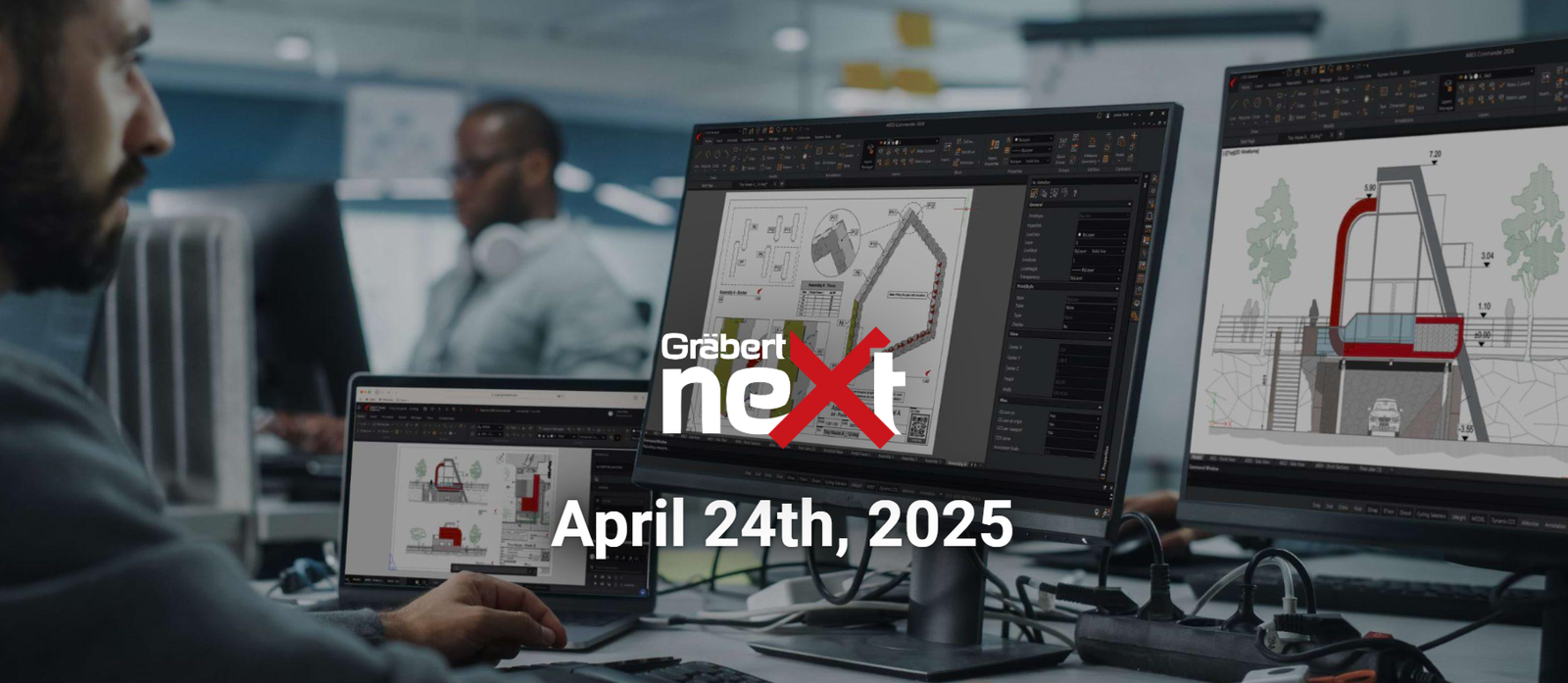Your Cart is Empty
Customer Testimonials
-
"Great customer service. The folks at Novedge were super helpful in navigating a somewhat complicated order including software upgrades and serial numbers in various stages of inactivity. They were friendly and helpful throughout the process.."
Ruben Ruckmark
"Quick & very helpful. We have been using Novedge for years and are very happy with their quick service when we need to make a purchase and excellent support resolving any issues."
Will Woodson
"Scott is the best. He reminds me about subscriptions dates, guides me in the correct direction for updates. He always responds promptly to me. He is literally the reason I continue to work with Novedge and will do so in the future."
Edward Mchugh
"Calvin Lok is “the man”. After my purchase of Sketchup 2021, he called me and provided step-by-step instructions to ease me through difficulties I was having with the setup of my new software."
Mike Borzage
Is the New Acrobat 3D headed for Failure or Success?
February 26, 2007 6 min read

I like "CAD Data Visualization," another may prefer DDC (Digital Design Communication), someone else might like the ambitious acronym PDC (Product Design Collaboration), but whatever name you choose, this kind of software program has been around for many years. The central idea is to provide affordable ways to visualize the content of a CAD file for those who don’t own the original expensive CAD system. Over time these tools evolved from view-only to view-share-and-communicate.
In January 2006 Adobe released the first version of Acrobat 3D joining the group of software manufacturers offering CAD visualization solutions. Acrobat 3D 1.0 is a special version of Adobe’s popular PDF product. Despite suffering from the typical problems of every first release, it indicated Adobe’s ambitions for the CAD world. Now, one year later, Adobe is getting ready to lunch a new and improved version of Acrobat 3D. Most of the features in the new release are based on the technology Adobe acquired with TTF (Trade & Technologies France), a French software company specializing in CAD interoperability. For a detailed list of feature improvements for the new version you can check the Adobe pages.
when a company adds a new feature it can’t dictate to users when to use it or not
Last Friday Adobe invited me and other bloggers such as Deelip Menezes to an online preview of the new Acrobat 3D version 8. I would like to share my opinion on this new product and the Adobe strategy for the 3D world.
- Data Visualization or Data Translation?
- While the first version of Acrobat 3D was a visualization-only solution, the new release will offer the option to export a 3D model from PDF to IGES and STEP file formats. According to Adobe, this feature is not intended for a CAD-to-CAD data translation and, according to them, PDF should be used only to move geometry from a CAD system to a post-CAD system, such as CAM, rendering, animation, etc. While theoretically this is not a bad idea, I expect users will ignore Adobe recommendations. When a company adds a new feature to its products, it can’t dictate to users when to use it or not. Pretty soon Acrobat users will start to use PDF to move geometric information among CAD systems, and Adobe will find itself pulled into the data translation area. Without a very strong technical background in that field, this is not a nice position to be in!
- To PDF or not to PDF?
- Over the years PDF has earned a great reputation as a multi-platform, reliable, mostly version-insensitive, compact, and standard format. Leveraging this huge popularity, Adobe has gradually transformed PDF into a sort of container where you can put almost everything: text, images, sound, forms, videos, and 3D models. This seems like a great idea to expand the PDF market, but it can easily backfire and undermine the reputation of PDF.
Let’s look for example at the problems that can arise from storing a CAD model in a PDF file. 3D models are not as simple as text or pictures. In fact, in just one release PDF internal representation moved from one to 4 different 3D file formats: (1) the internal tessellated representation, (2) U3D specification 1, (3) U3D specification 2, (4) PRC (the TTF file format). It’s a slippery slide: if this proliferation of formats continue, in the near future receiving a PDF would not guarantee simple and easy access at information contained inside the file. If this happen, users will have to learn that what they know about PDF documents doesn’t apply to PDF 3D models. - Do you want Geometry or Tessellation?
- When you create a 3D PDF this is the critical question asked by the Adobe software. A tessellation-only PDF is a safe way to share design information and to protect your intellectual property. It’s like sharing a picture of your 3D model. On the other hand, when the 3D PDF also includes the geometry, sharing the PDF is equivalent to sharing the original model. Anybody can extract from the PDF file a STEP or IGES copy of the original geometry. As you can imagine, the consequences of this simple decision — tessellation or geometry — are enormous. The problem is: does the average user know what a tessellation is? Does he know all the implications of this choice? Based on what I’ve seen, Acrobat 3D user interface is not doing a good job in helping users to understand the meaning of "tessellation" and "geometry" and to appreciate the consequences of the two options.
- What is in a PDF?
- Because of the structural ambiguity between tessellation and geometry, when you receive, send, or archive a PDF you don’t really know what’s inside. When we store a PDF file on our hard disk, are we archiving valuable geometric information or just a bunch of small triangles (tessellation) good only to create nice images on our screen? The only way to tell the difference is to open the file and see if the "Export" option is enabled or not. This ambiguity can easily become a CAD manager nightmare!
- Do we really need another 3D file format?
- When you generate a 3D PDF selecting the option "include-geometry" Acrobat 3D converts your original CAD file to PRC file format and embeds the PRC representation in the PDF file. If you share or exchange geometric information using PDF, you are just using a PRC file nicely wrapped within the familiar PDF file format — it is still a PRC file. Adobe chose PRC because it’s the TTF file format that they own, not for any specific technical reason. Why didn’t they embed a fully standard STEP file instead of a PRC? I’m sure the Adobe marketing has a good explanation, but from the end-user point of view, now we have one more 3D file format to deal with. And nobody needs it!
- Acrobat Reader Nightmare.
- Adobe Acrobat Reader is essential to the Acrobat 3D success. For most of the users Acrobat Reader is just a way to open PDF files they receive by e-mail or download from the Internet. Over the years Acrobat Reader has become a huge, slow, and unstable piece of software. If we don’t hear many complaints from end-users it’s because this is a viewing-only tool. When it crashes (not a rare event on my computer) the user doesn’t lose any data. He/she can restart the program, reopen the PDF document and everything is OK. If Adobe couldn’t manage to develop a reliable Acrobat Reader when PDF contains only text and pictures, what will happen when PDF comes with 3D models, in one of the 4 different formats?
After listing all the limitations of Acrobat 3D and Adobe strategy, let me explain why I believe Adobe has a chance to succeed with Acrobat 3D.
- Adobe Acrobat 3D is here to stay.
- The acquisition of TTF and the investments in the new version of Acrobat 3D are the proof of Adobe’s commitment to design data communication. I believe there is a huge opportunity in this market. So far I haven’t seen any company with the strategy, resources, and determination to develop and conquer this market. Adobe is a good candidate that I’ll be watching.
- Acrobat doesn’t have competition.
- Today Acrobat 3D still a young product. Over time it can grow into a mature, full-featured product. Adobe is looking at a huge opportunity — even more so because there is no real competitor to challenge Acrobat 3D. Currently, the CAD Data Visualization is a market only partially exploited, controlled by a handful of single-brand solutions and a few small companies. The single brand solutions, like Autodesk DWF and e-drawings, are by definition limited to the products of just one single software manufacturer; they don’t have any appeal for other software systems users. The other competitors are mostly small companies. Some of them are offering excellent products but they don’t have the strategies or the resources to develop and occupy this huge potential market.
- Adobe is like Switzerland.
- A CAD data communication solution can be successfully promoted only by a company that doesn’t own, and is not related to any of the major CAD systems. This is one of the reasons for the failure of the Autodesk DWF file format. After some adjustments to Acrobat 3D (that will presumably require a couple of releases) Adobe will be in a perfect position to propose itself as a neutral and reliable partner to manage the design communications of all major manufacturers, regardless of which CAD system each company uses or will use in the future.
These are just my opinions, but I would like to hear yours too. Please feel free to leave a comment and share your thoughts with me and all the readers of this blog.
Franco Folini
Also in NOVEDGE Blog

Enhance Your Designs with VisualARQ 3: Effortless Geometry Extensions for Walls and Columns
April 30, 2025 8 min read
Read More
MecSoft Unveils RhinoCAM 2025 and VisualCAD/CAM 2025 with Enhanced Features
March 08, 2025 5 min read
Read MoreSubscribe
Sign up to get the latest on sales, new releases and more …



